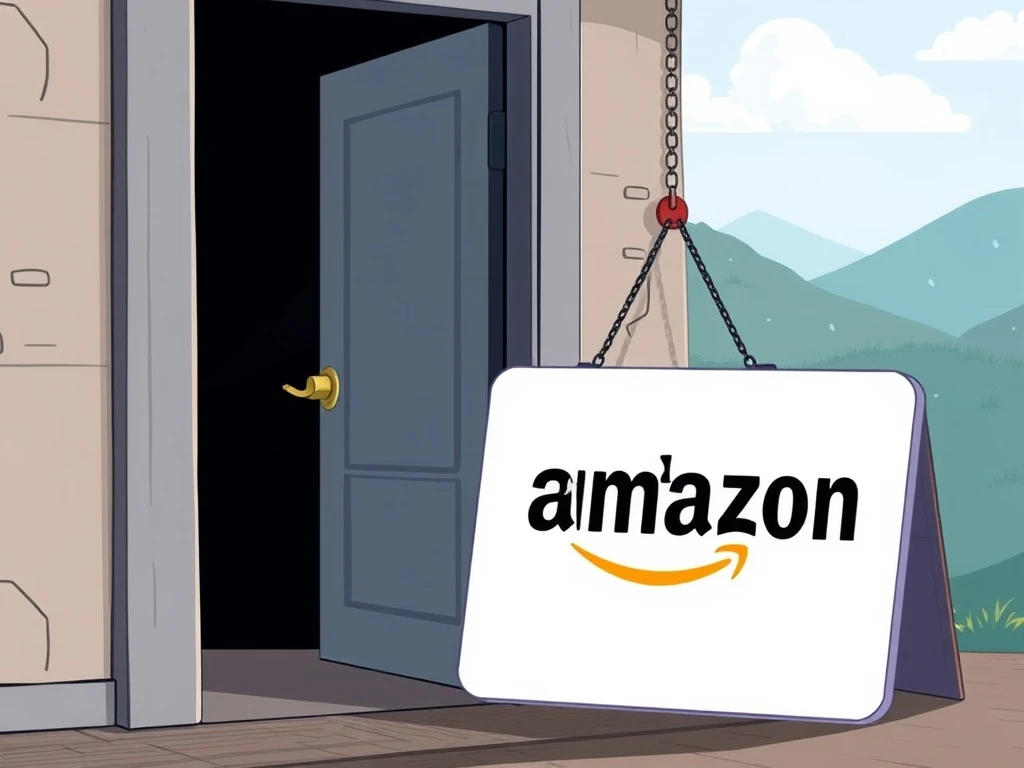In a significant development for its vast customer base, Amazon has decided to discontinue a long-standing free service. This particular Amazon Free Service had been available to customers for an impressive 14 years. Its closure marks a notable shift in the company’s strategy. Many users benefited from this offering over the years. Therefore, its cessation raises questions about Amazon’s evolving priorities. Business leaders and entrepreneurs often analyze such decisions closely. They seek to understand the underlying economic and strategic motivations. This article explores the implications of this major move by the e-commerce giant.
The End of an Era: Amazon Free Service Discontinuation
Amazon recently announced the shutdown of a specific free service. This service provided value to customers for nearly a decade and a half. For 14 years, users accessed various benefits without direct cost. The decision to cease this Amazon Free Service reflects a broader trend. Companies frequently re-evaluate their offerings. This process ensures alignment with current business objectives. Such re-evaluations are critical for long-term sustainability. They also help maintain profitability.
The service, while free, likely incurred operational costs for Amazon. These costs included:
- Infrastructure maintenance.
- Staffing and support.
- Development and updates.
Consequently, discontinuing it could free up significant resources. These resources can then be reallocated. They might fund new projects or enhance core services. Furthermore, this move signals a potential shift in Amazon’s approach to customer engagement. The company might be moving away from certain types of free incentives. Instead, it may focus on premium, subscription-based models. This strategic pivot is common in mature markets. Businesses aim to maximize value from every offering.
Why Companies Discontinue Services: Analyzing Amazon’s Decision
Businesses, even giants like Amazon, regularly assess their product portfolios. They make tough decisions about services that no longer meet strategic goals. Several factors typically drive the discontinuation of a long-standing offering like this Amazon Free Service. Understanding these reasons provides insight into corporate strategy. It also highlights the dynamic nature of the digital economy.
Common reasons for service shutdowns include:
- Low Return on Investment (ROI): A service might consume substantial resources without generating adequate revenue or strategic benefit.
- Strategic Realignment: The company’s core business focus may shift. Old services might no longer fit the new direction.
- Low User Engagement: If a service has declining or stagnant user numbers, its continued operation becomes less justifiable.
- Technological Obsolescence: The underlying technology might be outdated. Updating it could be too costly or complex.
- Regulatory Changes: New laws or compliance requirements can make a service unsustainable.
In Amazon’s case, the decision likely stemmed from a combination of these factors. The company continuously optimizes its vast operations. Therefore, every service must contribute meaningfully. This contribution can be direct profit or strategic value. The 14-year run suggests the service once served a purpose. However, market conditions and company goals evolve. This evolution necessitates periodic review and, at times, tough choices.
Financial Implications and Strategic Shifts
The financial impact of discontinuing a service can be substantial. For Amazon, eliminating the Amazon Free Service means immediate cost savings. These savings come from reduced operational overhead. They also include lower maintenance and support expenses. This financial optimization is crucial for a company of Amazon’s scale. It directly impacts profitability. Furthermore, it allows for reinvestment in more promising areas.
From a strategic perspective, this move indicates a sharpening of focus. Amazon might be consolidating its resources. It could be prioritizing services that drive Prime memberships or direct sales. This approach maximizes the value of its existing customer base. It also supports growth in high-margin segments. Moreover, the decision might reflect a response to increasing economic pressures. Businesses worldwide are scrutinizing expenditures more closely. They are seeking efficiencies wherever possible. This strategic shift is not unique to Amazon. Many large tech companies are refining their portfolios. They are shedding less profitable ventures. This allows them to concentrate on core competencies. It also helps them innovate in key growth areas.
Impact on Customers: What the Amazon Free Service Shutdown Means
The discontinuation of a long-standing service invariably affects its users. For customers who relied on this particular Amazon Free Service, the shutdown means losing a familiar benefit. The nature of the impact depends heavily on the specific utility of the service. However, a loss of convenience is a common outcome. Users might need to find alternative solutions. This can lead to frustration. It can also cause a feeling of diminished value from the Amazon ecosystem.
Amazon is known for its customer-centric approach. Therefore, it likely communicated the shutdown effectively. This communication often includes:
- Advance notice to allow users to adjust.
- Information on how to migrate data, if applicable.
- Guidance on alternative services, if any exist within Amazon’s offerings.
Despite clear communication, some customer dissatisfaction is inevitable. Long-term users develop habits around free services. Their removal can feel like a breach of trust. However, Amazon balances this risk against the strategic benefits of discontinuation. The company assesses the potential for customer churn. It also weighs the overall impact on its brand reputation. Ultimately, the decision suggests the benefits outweighed the risks in this specific instance.
Navigating the Change: Tips for Affected Users
Customers affected by the Amazon Free Service shutdown can take several steps. These actions help them adapt to the change. First, review Amazon’s official communication. This message provides specific details about the service. It also outlines any recommended actions. Second, explore alternative solutions. Many third-party providers offer similar functionalities. Consider their features and pricing. Third, evaluate your overall Amazon usage. Determine if other Amazon services can fulfill your needs. For instance, Prime membership offers numerous benefits. These benefits might compensate for the discontinued service. Finally, provide feedback to Amazon. Customer input helps shape future service offerings. This engagement can also highlight areas for improvement. Adapting proactively minimizes disruption. It ensures a smoother transition for users.
The Evolving Landscape of E-commerce and Value-Added Services
The shutdown of this Amazon Free Service highlights a broader trend in the e-commerce sector. Companies are constantly re-evaluating the role of free offerings. Initially, many free services served as powerful customer acquisition tools. They built loyalty and expanded user bases. However, the market has matured significantly. Businesses are now prioritizing sustainable growth. This often means shifting towards models that generate direct revenue. Subscription services, like Amazon Prime, exemplify this trend. They offer bundled value for a recurring fee. This provides predictable revenue streams.
The landscape of value-added services is dynamic. Companies are experimenting with various approaches. Some focus on premium features for paying customers. Others integrate services directly into core products. The goal remains the same: enhance customer experience while ensuring profitability. This evolution is driven by competitive pressures. It also reflects changing consumer expectations. Users are often willing to pay for superior or exclusive services. This willingness shifts the emphasis from ‘free’ to ‘value’. Therefore, businesses must innovate constantly. They must identify what truly adds value. They also need to determine what customers are willing to pay for. This strategic imperative shapes the future of digital commerce.
Lessons for Businesses: Adapting to Market Dynamics
Amazon’s decision offers valuable lessons for businesses of all sizes. First, regularly audit all service offerings. Assess their performance against current strategic goals. Second, be prepared to make tough decisions. Discontinuing underperforming services is essential. It frees up resources for growth. Third, communicate transparently with customers. This builds trust, even during difficult transitions. Fourth, prioritize core competencies. Focus resources on what your business does best. Finally, foster agility. The market changes rapidly. Businesses must adapt quickly to new trends. They must also respond to evolving customer needs. This includes re-evaluating every Amazon Free Service-like offering. Successful companies remain flexible. They embrace change as an opportunity. This approach ensures long-term resilience and growth.
Conclusion
The discontinuation of a long-standing Amazon Free Service marks a significant moment. It reflects Amazon’s ongoing strategic adjustments. After 14 years, the service no longer aligned with the company’s evolving objectives. This decision highlights the continuous need for businesses to optimize their operations. It underscores the importance of resource allocation. For customers, it means adapting to a new normal. They must seek alternatives for a previously free benefit. Ultimately, this move illustrates the dynamic nature of the e-commerce landscape. Companies must consistently innovate and adapt. They must balance customer value with sustainable business models. This ensures their longevity and continued success in a competitive market.
Frequently Asked Questions (FAQs)
Q1: Why did Amazon discontinue this free service after 14 years?
Amazon discontinued the service likely due to a combination of factors. These include low return on investment, strategic realignment, and potentially low user engagement. Companies regularly assess services to ensure they align with current business goals and profitability objectives. The 14-year run suggests the service had its time, but market dynamics change.
Q2: How does the shutdown of an Amazon Free Service impact customers?
Customers who relied on the service will lose a familiar benefit and convenience. They may need to find alternative solutions, which can cause minor disruption or dissatisfaction. Amazon typically provides advance notice and guidance to help users transition, but the direct impact depends on how integral the service was to their daily routine.
Q3: What does this decision mean for Amazon’s overall business strategy?
This decision suggests Amazon is refining its portfolio and optimizing resources. It likely aims to focus on core, high-value services that drive profitability or Prime memberships. It reflects a strategic shift towards more sustainable business models and efficient resource allocation, common among large tech companies.
Q4: Are there any alternatives offered by Amazon for the discontinued service?
Amazon’s communication regarding the shutdown usually specifies if any alternative services within its ecosystem can fulfill similar needs. While a direct replacement might not always be offered, customers are encouraged to explore other Amazon offerings, such as Prime membership benefits, which might provide comparable value.
Q5: What lessons can other businesses learn from Amazon’s service discontinuation?
Businesses can learn the importance of regularly auditing their service offerings for performance and strategic fit. It highlights the necessity of making tough decisions to discontinue underperforming assets, communicating transparently with customers during transitions, and maintaining agility to adapt to evolving market dynamics and customer needs.




















